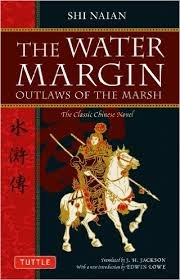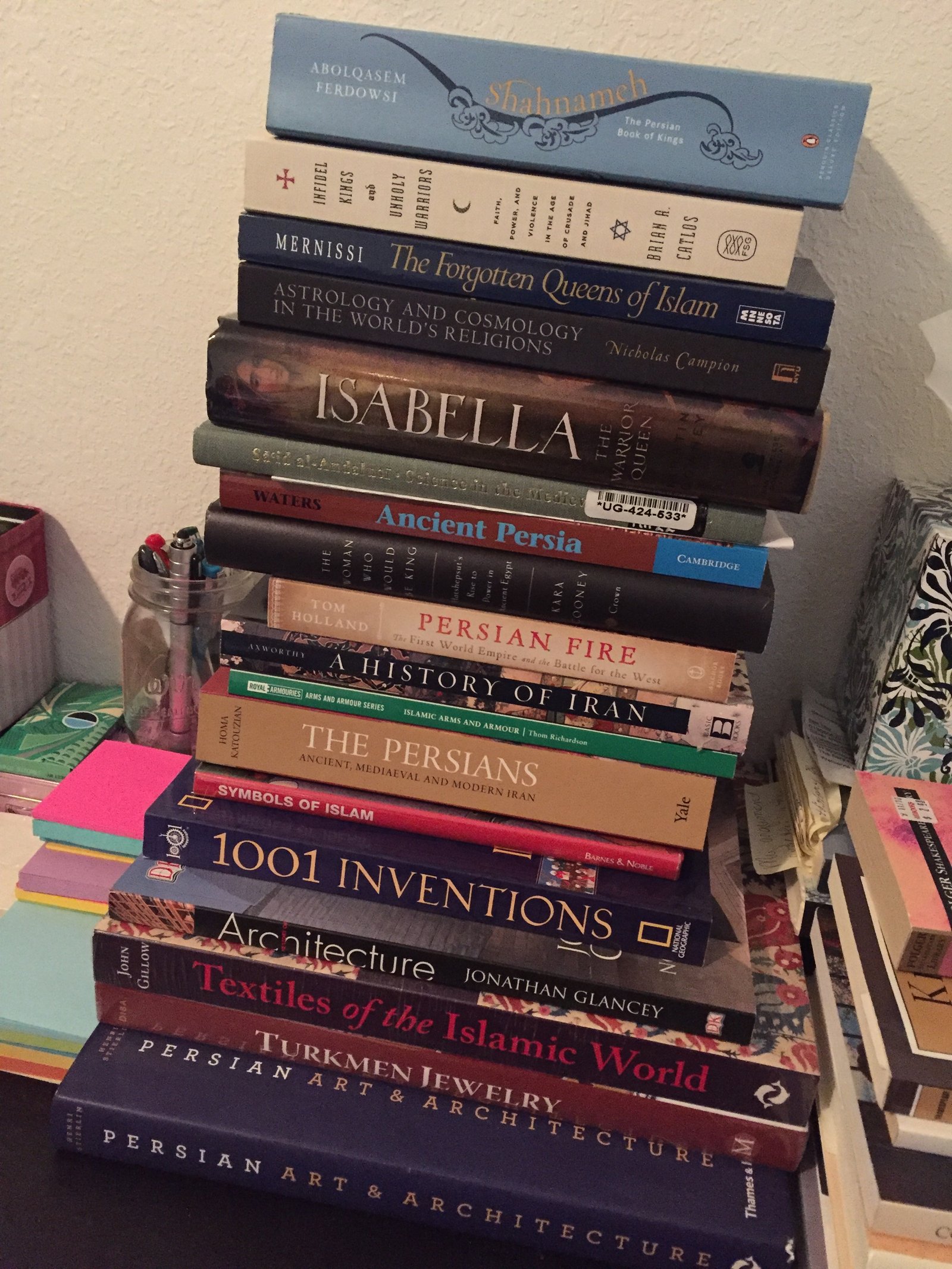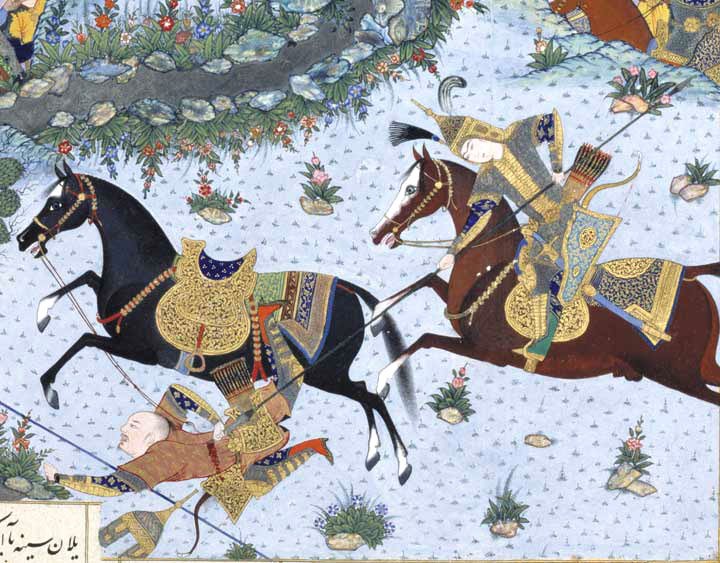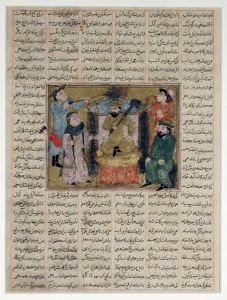(An early draft of this essay was written in 2011. This is a revised version.)
According to my American Heritage dictionary the word savage comes from the Latin for “of the woods, wild.” Savage is variously defined as “Untouched by man and civilization; not domesticated or cultivated; Ferocious; vicious or merciless; brutal.” Basically, savages are but one step up from wild animals. They are, as it were, undomesticated man.
The issue of how savages are the same as or different from barbarians is a related but entangled issue, one I will not get into now because instead I want to discuss the use of “savages” in fictional narrative both written and visual. This is an incomplete and partial examination of a complicated question. I use the generic “we” as a writing device, not to suggest I am speaking for others. Be aware I am specifically speaking from the point of view of an American (USA) writing in English.
A typical appearance of the stereotypical Savage Other in narrative may include some or all of the following characteristics:
1) Savage Others live in a crude and primitive manner, with primitive technology, primitive homes, primitive weapons, and primitive manners. They may be generally partially or mostly naked, and often they are painted or scarred; if clothed, then the clothing is usually unsophisticated while the decoration is often exotic and beautiful. Bare breasts might be prominent. They lack modesty and are sometimes perfectly happy to have sex in public because, like dogs and other animals, they lack self consciousness.
2) Fights, often to the death, and brute strength (i.e. violence) are often used to solve social problems within the group. Savages often are boisterous, unable to grasp or stomach the subtleties of politics or social relations.
3) They often are not articulate or talkative. There may be grunting. This is not always just because everything is being translated. Or, if they talk good, they have a limited palette of conversational topics.
4) Simplistic notions of the universe often combine with a primitive notion of religion. Also, sometimes they can’t count past 3. They may be cunning but are rarely or never inventors or sophisticated problem solvers. Usually they are gullible and superstitious, although often their naïve view of the world may prove to be profound in some mystical way.
5) Sucks to be a woman. They get all the worst chores and are also at constant risk of rape, especially captive women without a guardian or some man who has claimed her (see #9 below, the primal edge).
5a) Exception: Free savage women may have lusty sexual appetites to go with their bare breasts. Also, savage women can sometimes best civilized men in arm wrestling.
6) Blind loyalty to strong masculine male leader. Blind loyalty turns quickly to feeding frenzy if leader shows the slightest sign of weakness.
7) Dirty or matted, tangled hair a bonus. Decoration a plus, especially bones woven into the hair. Peter Jackson’s King Kong film, I’m looking at you.
8) Savages are usually “those people over there” and never “our people.” I have not done a statistical study on how many in works written by Euro-American authors map savages to non-white non-European groups. But that wouldn’t mean anything anyway because blond people can be depicted as savage, too! You know, like the Scots! No, wait, the Picts! Aren’t they blond?
9) Savages lack discipline. That is, they live close to the “primal edge” and just one little bit of alcohol or tip of excitement will set them over the top and into the kind of impulsive behavior that suggests they have no awareness of themselves in a social milieu. Another way of looking at it might be to say that adult savages lack impulse control in something of the same way some teenagers are said to lack impulse control; in other words, they have never quite grown up; they are perpetual children lacking adult restraint and insight and the virtues of consideration, decorum, and moderation, unless, of course, they are a Wise Savage, in which case they are connected to the mystical spirit of the universe, or a Noble Savage, in which case, bad luck, because they are soon to be wiped out so “we” who have recorded their Last Days can mourn their passing.
10) Occasionally they need an Outsider to help them out, become ruler, save them, or civilize them.
Here are four problems I have with depictions of the Savage Other, although this is by no means a complete discussion of how deeply problematic this stereotype is.
One:
The idea that the default state of human beings is “savagery” lies beneath many of these depictions: an unexamined assumption that this is “what we-as-humans are really like.” The problem with the “what we are really like” theory is that just as human beings have violent tendencies, they also have altruistic and cooperative tendencies; just as they can be cruel, they can also be kind and affectionate. Altruism, cooperation, kindness, tenderness, and affection are not the purview of civilization, just as cruelty and violence are not the purview of savagery. All exist within human behavior regardless.
Two:
A “simple” level of social organization, or a low level of technology, does not mean there are equally simple levels of innovation, social interaction, cosmological understanding, or customary (unwritten) law within the group.
What we think of as “primitive tech” was once leading edge tech. Throughout history people have figured out how to use the technology they have in sophisticated ways to deal with their environment and improve their lives. We got where we are today because of uncounted numbers of innovations and inventions that came before in a steady chain of discovery, many forgotten or unrecognized.
In college I took a class on “South American Indians” in which we studied, among other things, cosmologies of various groups. The cosmologies of many of these groups were exceedingly complex and layered and sophisticated. Additionally, the layers of social interaction are usually extremely complex in all societies, and social relationships may be necessarily multilayered in so-called “simpler” societies. If you have ever studied kinship terms you can see how simplified, or one might say atrophied, American English kinship terms are compared to kinship terms in many other languages.
Three:
Human groups have all been developing for the same amount of time. They are continually adapting to their environmental and geopolitical circumstances, which are constantly changing in ways we can’t always see from the present moment. My spouse has worked in the Highlands of Papua New Guinea, and he will tell you that some of the most supple and sophisticated thinkers he has met have been highland villagers in PNG who may seem, by external technological Western measurements, to be more “primitive” (or “less advanced”) than “us” but who are far less locked into rigid ways of thinking.
When we say “less advanced,” what do we really mean? How are we defining “advanced?” Usually we are defining it in terms of cities and urban civilization. Politically and bureaucratically state level societies are usually described as “more advanced” than chieftain level societies because they are more populous and have more moving parts and more specialization. (Lest you wonder, I like my technological conveniences and my Constitution just fine, thank you.)
Yet, for instance, the culture of the nomadic Mongols made famous by the 13th century conquests of Genghis Khan was not “less advanced” in cultural terms compared to other cultures of that time. It was suited to its environment, and was as sophisticated and complex in terms of interpersonal dynamics, cosmological understanding, and the nature of lineage and tribal obligations that bound sub-groups together. It had been developing throughout prehistory through stages in a parallel process (with a different outcome) to the development of the complex urban civilizations of the time, those in China, Persia, and the Middle East. Although not based in an urban context, the fluid and dynamic nature of the steppe lineages and groups proved superior militarily to the urban societies they conquered. The Mongols knew how and where to get the outside knowledge they needed to do what they wanted, including bringing in Chinese siege warfare experts just as one example. The descendants of that conquest held on for a reasonably long time in historical terms as the initial empire grew and then slowly collapsed in the way typical of large empires.
Four:
“Savages” do not behave that way. Functional societies are orderly in an internally consistent way. Functional societies rely on social mores, legal (written or unwritten) expectations or codes, and societal ways (which may be repressive, customary, tolerant, familial, or law-bound) of enforcing social cohesion.
Let me repeat: All functional societies contain social mechanisms to regulate behavior within the group.
Groups that lack social and customary (legal) cohesion do not survive, or they are already disrupted by other forces which are causing them to change or dissolve. Things like environmental stresses, economic collapse, imperial or colonial pressure or exploitation, and war (internal civil or invasion by an outside group) disrupt social cohesion.
In other words, “savage” defines behavior, not culture. Savage behavior is a dynamic that most often comes into play because of disorder or high stress. For instance, when Wellington’s army sacked the city of Badajoz in 1812, they engaged in savage behavior.
No society or culture can function internally, with internal cohesion, with “savage behavior” as its sole social web. We only think it can be true because the contrast flatters us and reinforces our expectations and assumptions about who is a savage.
Do people behave horribly sometimes? Absolutely.
So here’s my problem: An incident of “savage” or “wild” behavior among a people who are classified as “savages” defines “them,” and the entire culture, as savage, whereas an incident of “savage” or “wild” behavior among “us” (ours, people like us) is defined as an aberration, the exception that proves the rule of our disciplined, advanced, cohesive, orderly, and thus superior society.
But human society is by definition social; we have evolved within social bonds, and with human emotions that influence the ways we interact, enforce social bonds and behavior, and create our way of understanding the world around us.
Humans are as a group emotionally sophisticated, although individuals vary. One of the worst problems with the depictions of the Savage Other is that entire “peoples” or “groups” are treated as if, like variant individuals, they fall outside the curve. But people live in social groupings for a reason: not only are we band animals, we are so because we survive in bands (and larger groups) whereas alone we would die.
As soon as any grouping of people settles into a band or larger society, they now have a social order and will interact to improve the social order (even if only in their favor).
In other words, the Savage Other does not exist. It is a construct, held up so we can feel better about ourselves.
When one people or civilization referred in the past (or refers today) to another as “savage” it is important to examine where and why that word was (or is) being used. Usually it is specifically used to create a value judgement that allows “our” culture to be elevated as more civilized and superior and “theirs” as savage and thus inferior. People in the past, just as in the present, had prejudices and agendas and we should therefore not repeat their judgements as if they were objective.
I’m reminded of the argument that the civilization of the Aztecs (also known as the Mexica) was “savage” because they did not use forks: So said anthropologist Lewis Henry Morgan, writing in the 19th century. Meanwhile, conquistador Bernal Díaz del Castillo, writing as an old man in the 1560s, reflects that the Spaniards with Hernán Cortés on that first fateful expedition had never seen a city in Europe as large, spacious, orderly, and beautiful as the Aztec capital of Tenochtitlan. Some people typically argue that the Aztecs were savages because they practiced heart sacrifice. A nasty business, I agree. But Mexica heart sacrifice was a tool for political (and religious) power just as the various inquisitions and pogroms have been in Europe, with torture, burning at the stake, and wholesale slaughter part of the historical record. And let’s review a few horrific details of the conquest of the Americas as detailed in Bartolomé de las Casas’s A Short Account of the Destruction of the Indies (published in 1561):
“The Spaniards forced their way into Native settlements, slaughtering everyone they found there, including small children, old men, pregnant women, and even women who had just given birth. They hacked them to pieces, slicing open their bellies with their swords as though they were so many sheep herded into a pen. They even laid wagers on whether they could manage to slice a man in two at a stroke, or cut an individual’s head from his body, or disembowel him with a single blow of their axes. They grabbed suckling infants by the feet and, ripping them from their mother’s breasts, dashed them headlong against the rocks.”
Are these acts and the religious-political justification for killing any less savage?
Depictions of the Savage Other in fiction and film don’t function as realistic societies because they don’t contain the complex underpinnings and social interaction that functional working societies have. Savage Others in such cases are poorly thought-through as a piece of world-building. They’re bad craft, and they are also extremely harmful stereotypes. Any belief that they represent a real “type” of human social order has more to do with our willingness and desire to accept a simplistic weave of cliches than with the reality of their existence.
 Originating in the transitional phase between the end of the Yuan (Mongol) Dynasty and the early Ming Dynasty it is based on the story of an historical bandit named Song Jiang who lived during the reign of the Huizong Emperor during the Song Dynasty (1100 – 1126 C.E.), the one the Mongols conquered. I haven’t read it yet but it appealed to me because it is the story of virtuous people from every level of society who, forced into banditry, are fighting against a corrupt and unjust government.
Originating in the transitional phase between the end of the Yuan (Mongol) Dynasty and the early Ming Dynasty it is based on the story of an historical bandit named Song Jiang who lived during the reign of the Huizong Emperor during the Song Dynasty (1100 – 1126 C.E.), the one the Mongols conquered. I haven’t read it yet but it appealed to me because it is the story of virtuous people from every level of society who, forced into banditry, are fighting against a corrupt and unjust government.













